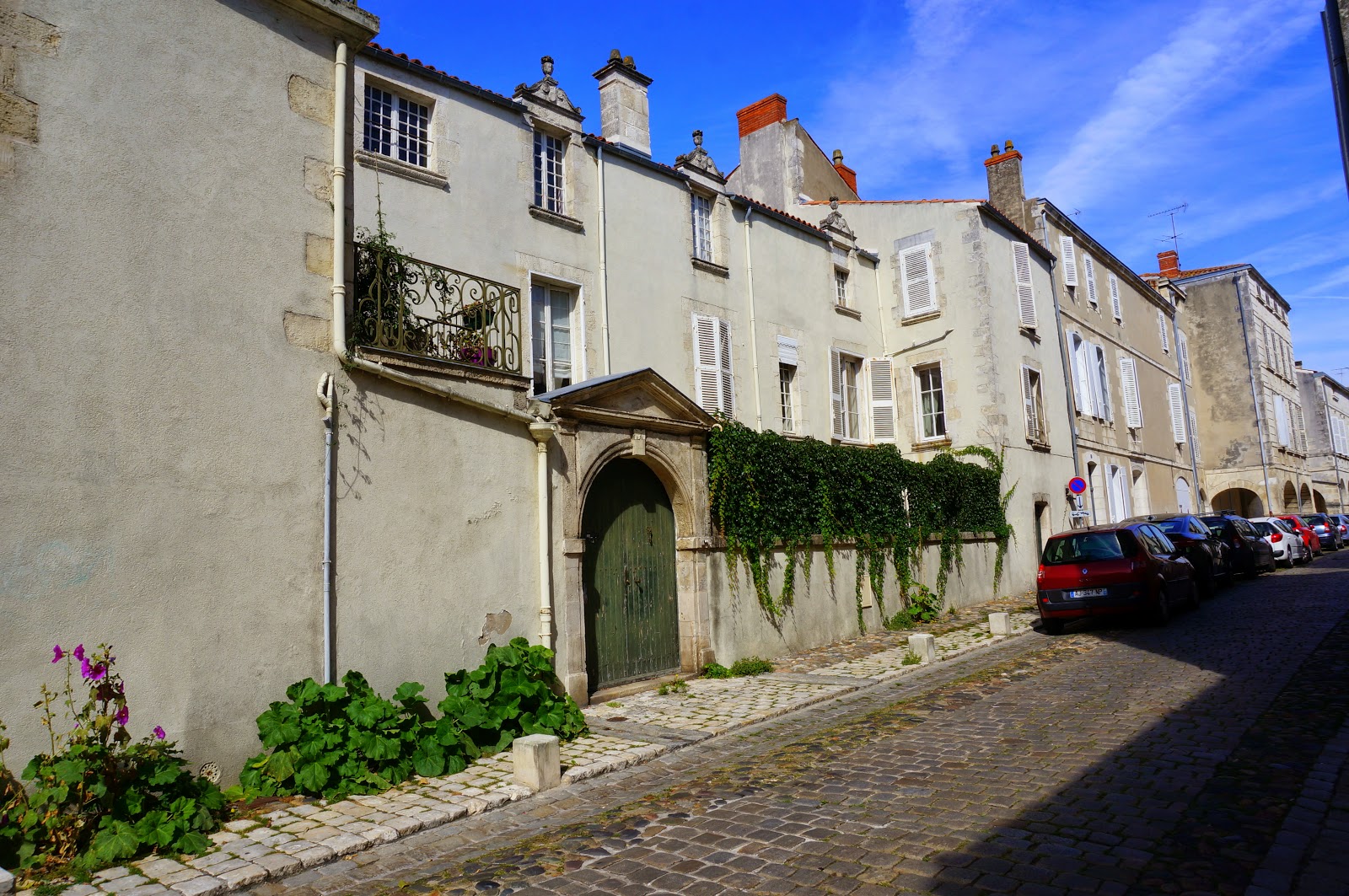Sunday, September 14, 2014
picking the pockets of the successful
When we left off yesterday, I was telling you a bit of La Rochelle’s history. How the Huguenots -- the French protestants -- ended up on the short end of a pogrom.
What I didn’t tell you is how all of that came to be. If you fall into step with me, I will show you a bit of a once-proud and prosperous town -- a town that is regaining a bit of its glamor.
La Rochelle has long served the western provinces, of what would once be France, as a commercial and military port. The emphasis was on “commercial,” with the military acting as a supporting role to commercial interests. And they were big interests to protect. As the years passed, La Rochelle became one of the richest cities in Europe -- so influential were the local merchants that they were allowed to choose their own city rulers.
The area was initially know for its salt mines. Salt that was traded throughout Europe. Along with the export of agricultural goods and stone. The city’s merchants also started trading with Africa in exotic woods and with China in silk and jade.
Because it was such an important city, it changed hands often between the French and the English, as did much of western France. Eventually ending up as a French city in 1372.
La Rochelle’s charter, and its growing wealth, gave it effective freedom from control by Paris. Several French kings attempted to curb the city’s privileges. To no avail. Instead, the city grew in power.
That power is evidenced by the half-timbered mansions of the merchants. Some still remain -- with their distinctive slate-covered timbers. I have never seen that particular architectural design anywhere else.
That is, until the citizens decided to be protestants in the late 1500s and early 1600s. At first, the rise of Calvinist French citizens was not seen as a religious or political issue. The catholics and protestants even shared the same churches on Sundays.
But Paris took note when the city morphed into 90% protestant. The Protestants reacted by tearing down the catholic churches, but not their towers, in the hopes of driving away the remaining catholics, and to use the stone for fortifications for the coming military storm from Paris. The towers were then used as lookouts and gun platforms.
To this day, you can see gothic towers, with shards of old churches, attached to newer baroque churches. The catholic churches that were built following the eventual collapse of the city.
After several unsuccessful attempts to destroy the city by siege, the French royal forces finally prevailed in 1628. Some of the few surviving protestants remained in the city even though it had lost its privileges. When the persecution increased, most left by 1685.
Catholic triumphalism is apparent in the city’s chubby cathedral. It more a symbol of political power than of pious faith.
The departure of the protestants also saw the start of a new trade for France -- slaves. The same triangular trade from Africa to the New World to Europe, that Spain, Portugal, and England were to indulge in, would bring new wealth to the city. Until the slave trade was made illegal in the mid-1800s.
There is also a memorial in La Rochelle to its connection with the New World. One street is paved with stone imported from Canada. (Mexpatriate shows its care for its Canadian readers in many ways.) Of course, it seems odd that a city known for exporting stone would import stone for its streets. But when you were as rich as old La Rochelle, you could show that wealth in common ways.
La Rochelle has never again been as politically powerful as it was up until the mid-1600s, but it has recovered a good deal of its allure as a trading center. The old city is filled with shops of exotic goods. Including artsy furniture stores that catch the eyes of new home owners.
Maybe they mean it as a tribute to their past, but you can buy a luxury handbag for 1300 Euros -- and, for all I know it was made by the slave labor of a political prisoner in Red China.
History moves on; the human condition remains constant.
Subscribe to:
Post Comments (Atom)






